Archived Water Damage Blog Posts
Why Quality Matters in Water Damage Restoration
10/18/2024 (Permalink)
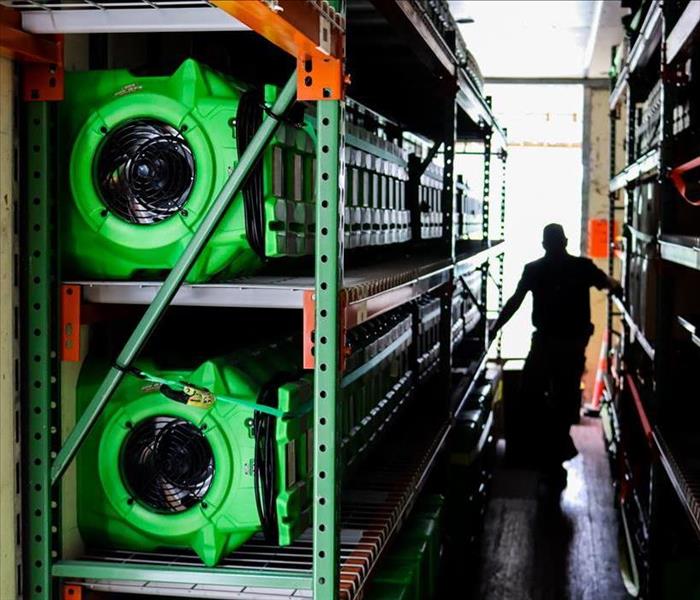 Don’t leave your home in the hands of just anyone—choose a trusted, certified restoration service like SERVPRO of Gulf Beaches South!
Don’t leave your home in the hands of just anyone—choose a trusted, certified restoration service like SERVPRO of Gulf Beaches South!
Water damage can happen when you least expect it—a sudden storm, a burst pipe, or even a slow, unnoticed leak can wreak havoc on your home. In St. Petersburg, FL, where humidity and rain are common, homeowners need to be particularly vigilant about water damage. But it’s not just about fixing the immediate problem; the quality of the restoration work is crucial in preserving your home’s value. In this blog, we’ll explore why high-quality water damage restoration is essential for maintaining your property’s value and what you should look for in a restoration service.
The Impact of Water Damage on Home Value
Water damage can significantly affect the value of your home. If left untreated or if not properly addressed, water damage can lead to long-term issues like mold growth, structural damage, and decreased air quality. These problems can deter potential buyers and lead to lower offers if you decide to sell your home.
How Water Damage Affects Property Value
When water damage occurs, it doesn’t just impact the aesthetic appearance of your home. It can lead to hidden issues that compromise the integrity of the structure. For example, prolonged exposure to moisture can weaken the foundation, warp hardwood floors, and damage drywall.
Why Quality Restoration Matters
When it comes to water damage restoration, not all services are created equal. High-quality restoration work can make the difference between maintaining your home’s value and facing costly repairs down the road.
Proper Assessment and Mitigation
A professional restoration service will start with a thorough assessment of the damage. This involves using specialized equipment to detect moisture levels, even in areas that aren’t immediately visible. A detailed assessment ensures that all affected areas are identified and treated, preventing future issues.
Effective Water Extraction and Drying
One of the most critical aspects of water damage restoration is the extraction and drying process. If water isn’t removed quickly and thoroughly, it can lead to mold growth and further structural damage. High-quality restoration services use advanced equipment, such as industrial-grade dehumidifiers and air movers, to ensure that your home is completely dry.
Preventing Mold and Secondary Damage
Mold is a common consequence of water damage, and it can start growing within 24-48 hours if the water isn’t properly extracted. Mold can cause significant damage to your home’s structure. High-quality restoration services include mold prevention as a part of their process, using antimicrobial treatments and proper ventilation to stop mold growth before it starts.
Choosing the Right Restoration Service in St. Petersburg, FL
With so much at stake, it’s essential to choose a restoration service that has the experience, certifications, and equipment to do the job right.
Look for IICRC Certification
The Institute of Inspection, Cleaning, and Restoration Certification (IICRC) set the standard for water damage restoration. Choosing an IICRC-certified company means you’re working with professionals who have undergone rigorous training and adhere to the highest industry standards.
Local Experience Matters
In St. Petersburg, where weather conditions can vary greatly, it’s important to choose a restoration company that understands the local climate and the unique challenges it presents. A company with local experience will be better equipped to handle the specific needs of homes in this area.
Customer Reviews and Reputation
Before hiring a restoration service, take the time to read customer reviews and check their reputation. A company with a strong track record of satisfied customers is more likely to provide the high-quality service you need to protect your home’s value.
Final Thoughts
Water damage can have a significant impact on your home’s value, but with quality restoration, you can protect your investment and maintain the integrity of your property. Don’t leave your home in the hands of just anyone—choose a trusted, certified restoration service like SERVPRO of Gulf Beaches South to ensure the job is done right.
6 Plumbing Maintenance Tips Every Homeowner Should Know
6/26/2024 (Permalink)
Plumbing issues can quickly turn into expensive and inconvenient problems if left unchecked. However, with some proactive maintenance, you can prevent many common plumbing issues before they occur. Here are some essential preventive plumbing maintenance tips every homeowner should know:
Regularly Inspect for Leaks
Even small leaks can lead to significant water damage over time. Make it a habit to regularly inspect your plumbing fixtures, such as faucets, toilets, and pipes, for any signs of leaks. Look for dripping or pooling water, water stains on walls or ceilings, and musty odors, which can indicate hidden leaks.
Keep Drains Clear
Clogged drains are a common plumbing issue that can lead to backups and overflows. To prevent clogs, avoid putting grease, oil, food scraps, and other debris down your drains. Use drain strainers to catch hair and debris in sinks, showers, and tubs, and periodically flush drains with hot water and vinegar to remove buildup.
Maintain Your Water Heater
Your water heater plays a crucial role in providing hot water for bathing, cooking, and cleaning. To keep it running efficiently and prevent problems, flush the tank annually to remove sediment buildup, check the pressure relief valve for leaks, and inspect the anode rod for signs of corrosion.
Winterize Your Plumbing
Freezing temperatures can cause pipes to freeze and burst, leading to extensive water damage. Before the cold weather sets in, take steps to winterize your plumbing, such as insulating exposed pipes, disconnecting outdoor hoses, and draining water from outdoor faucets and irrigation systems.
Monitor Water Pressure
High water pressure can put excessive strain on your plumbing system and increase the risk of leaks and pipe damage. Use a pressure gauge to check your home's water pressure periodically, and if it's consistently above 80 psi, consider installing a pressure regulator to reduce the pressure to a safe level.
Invest in Professional Inspections
While regular maintenance can help prevent many plumbing issues, it's also essential to have your plumbing system inspected by a professional plumber regularly. A qualified plumber can identify potential problems early on and recommend any necessary repairs or upgrades to keep your plumbing system in top condition.
By following these preventive plumbing maintenance tips, you can help avoid expensive repairs and minimize the risk of water damage in your home. Remember that prevention is key when it comes to maintaining your plumbing system, so don't wait until you have a problem to take action. Schedule regular inspections and address any issues immediately to keep your plumbing system running smoothly.
Common Water Issues for Businesses
8/15/2023 (Permalink)
For a commercial property owner in Florida, unexpected water problems can be a big issue. Fortunately, water damage professionals can help you assess, clean, and repair damages from any flooding or leaks you may have. Here are a few of the most common water problems a business may face, from leaking pipes to foundation cracks.
1. Pipe Breaks
A pipe break can occur in several ways. Over time, the pipe can age and loosen in its fittings, or extensive use can lead to pinhole leaks. Extreme heat or cold can affect a pipe’s integrity. A blocked pipe can lead to pressure buildup and burst.
2. Plumbing Backup
Blocked plumbing can lead to a toilet backup or sink overflow. Water in blocked pipes can take the shortest path regardless of its intended flow path. Blockages occur, including the buildup of water minerals over time inside a pipe or someone pouring a solidifying material, such as plaster or grease, down a drain.
3. Weather
Extreme weather conditions can lead to leaking pipes. Cold temperatures can cause the water in pipes to freeze and expand. The expansion puts pressure on the pipe and can create a crack or cause it to burst. If you know cold weather is coming, you can check with a local professional what preventive measures to take.
4. Foundation Cracks
Foundation cracks can become a problem leading to water damage. Water can seep through any cracks and pool, leading to issues such as mold. Any cracks should be assessed quickly to determine the best course of action.
Water damage can happen to a commercial property. Fortunately, a professional can fix the damage caused by leaking pipes, foundation cracks, a backed-up toilet, or weather, and help you repair your property. Contact SERVPRO of Gulf Beaches South / West St. Petersburg at (727) 341-1001.
How to Locate a Bathtub or Shower Leak
8/15/2023 (Permalink)
Though some water leaks throughout your Florida home can be easy to spot, there are a vast amount of others that require more than a casual glance. A shower or bathtub leak, for example, can fall into the latter category, as there are a variety of places for leaks to emerge from in these areas. If you need help identifying a water leak in your shower, SERVPRO of Gulf Beaches South / West St. Petersburg can help! Read how to locate one without much hassle effectively. Once identifying the source, contacting a trained water restoration team can ensure your home is cleared of any water damage, as well.
Check the Common Sources First
Before tearing into the tile work or uprooting your tub, it pays to investigate the more apparent areas first. After a shower, inspect familiar sources such as the:
- Showerhead face,
- The O-ring between the showerhead and arm,
- Faucet handles, and the areas surrounding them, or
- The caulking at the base or surrounding of a shower/tub combination
Leak issues are generally noticeable in these spaces and can be more easily detected by sight after running water through your shower.
Have a Professional Inspect Your Shower Pan, Whether New or Old
A shower pan leak is another usual spot for an issue, especially in tiled shower designs. These leaks can start due to the pan being too old and faulty or simply due to a new one being installed incorrectly. Therefore, it pays to have someone inspect this space as a potential cause for any shower or bathtub leak.
Determine the Severity of the Issue by Searching the Levels Below
There’s no clearer indication of a bad water leak within your shower floor than through the ceiling or flooring directly below the shower itself. Look for signs of water damage or condensation on the ceiling beneath a second-story shower or throughout your crawl space below a first-floor shower.
When you’re hoping to eliminate a shower or bathtub leak in your Florida home, follow any of these efficient methods for a quick solo inspection before contacting a professional for further assistance.
Water Damage 101: What Are the Categories of Water Cleanup?
6/21/2022 (Permalink)
Unexpected water in your home—where it shouldn’t be—isn’t something that should be overlooked. Whether the water damage appears to be minimal or overbearing, understanding the type of water and accompanying damage is important to ensure proper cleanup and restoration.
Types of Water
Any kind of flooding needs to be immediately addressed to ensure further damage doesn’t occur. Before grabbing the mop and bucket or wet vacuum, it is vital to understand the type of water that is being dealt with because there are three categories of water. These three categories vary by what type of contaminants makes up the water. The categories of water damage that restoration companies like SERVPRO of Gulf Beaches South / West St. Petersburg use are:
Clean Water: As its name suggests, this type poses little threat. This damage occurs when a water supply line leaks, a sink or bathtub without contaminants overflows, melting snow, or rainwater infiltrates the home.
Gray Water: Once water mixes with chemicals or minimal biological contaminants, it moves to this category. Sources may include a leaking dishwasher, urine-only toilet overflow, or water condensation.
Black Water: This is unsanitary water full of bacteria and microorganisms which bring potential harm to humans and animals. If there was a recent flood, it could mean those rising water included sewage and other debris. Flood water from storms is usually in this category.
Types of Damage
When assessing water damage to determine repairs, understanding the types is important.
Class 1: The least harmful kind, it typically means that a minimal amount was absorbed in the affected areas. It is usually easy to clean.
Class 2: Known for quick evaporation rates, it can quickly absorb into carpeting and other porous materials. This damage typically requires more extensive repairs.
Class 3: If a sprinkler or pipe bursts, it can rapidly drench floors, walls, furniture, and other belongings. The rapid rate of evaporation requires quick action and water remediation measures to ensure the damage doesn’t spread or promote microbial growth.
Class 4: Excessive flooding means massive saturation of integral home components. Consulting a water damage and remediation expert is the best bet containing the situation and ensuring further damage doesn’t happen.
I Have Extensive Water Damage—What Should I Do?
While there are many levels of water damage, quick action in all situations is key to getting your home back to normal. If you are unsure which cleaning method to take after any type of flooding, call us. We are available 24 hours. Our number is (727) 521-2562. We'll assess the level of contamination quickly to advise you on the safest course of action.
By hiring a cleaning contractor like SERVPRO of Gulf Beaches South /West St. Petersburg, you:
- Reduce your likelihood of exposure to pathogens.
- Mitigate long-term problems like microbial growth.
- No longer have to worry about either cleanup or reconstruction—we do both!
- Salvage flooring, furniture and important personal belongings.
- Don’t have to hassle with insurance—we do that for you!
Humidity: Primary and Secondary Damages Explained by Restoration Experts
6/21/2022 (Permalink)
 Call SERVPRO of Gulf Beaches South / West St. Petersburg restoration experts to mitigate primary and secondary damage due to storm, flooding + water.
Call SERVPRO of Gulf Beaches South / West St. Petersburg restoration experts to mitigate primary and secondary damage due to storm, flooding + water.
Different Types of Water Damage
Whenever excessive moisture gets inside a building, the problems it causes can be broken down into two categories: primary and secondary damage.
Primary Damage
When water leaks from a pipe or an appliance, it comes in contact with contents and building materials. Anything that happens due to direct contact with liquid water, such as the carpet's de-lamination, is considered primary damage.
Secondary Damage
Once water gets inside a structure, it naturally raises humidity levels indoors when moisture from wet materials evaporates into the air. Elevated humidity levels can also cause building materials issues since water transfers from the air into dry materials to reach equilibrium. When water vapor causes structural problems, it is called secondary damage.
Extraction procedures help reduce primary issues, and structural drying helps mitigate both primary and secondary water damage. When our SERVPRO technicians deal with any water damage situation, we monitor both relative and specific humidity.
What Controls Humidity?
Controlling humidity levels in a structure helps speed up structural drying times. Wet materials dry out faster if the humidity inside a building is kept low using air movers and dehumidifiers. Monitoring and strategic placement of these devices optimize drying times. When we keep humidity levels low, we also reduce water vapor in the air, causing fewer secondary issues.
Relative Humidity
Relative Humidity (RH) is a measure of how much water is in the air at any given temperature. RH is expressed as a percentage, so if the relative humidity is 100%, then the air is holding as much moisture as it can at that temperature. At this point, if not sooner, condensation can occur inside the building. "Raining" inside your home can only exacerbate the already water damaging effects. Air can hold more water at higher temperatures, so increasing the house's temperature will lower the relative humidity. That is one of the features of our HEPA filters. Not only does the filter suck the moisture from the air, but it also heats the air to dry the space quicker.
Specific Humidity
The temperature has such a significant effect on relative humidity, but it's not always a good gauge of how much water exists in the air. Specific humidity is the actual amount of moisture in the air. When our restoration professionals measure specific humidity, they count the actual grains of moisture in each pound of air. To find specific humidity, we measure relative humidity levels and the room's temperature. We then put these numbers in a psychrometric chart that gives us the grains per pound (GPP) number.
If you ever need help with issues related to water or humidity, such as flood damage, storm damage, or microbial growth, call SERVPRO of Gulf Beaches South / West St. Petersburg at (727) 521-2562, available 24 hours a day.
4 Easy Ways to Prevent Water Damage
6/16/2022 (Permalink)
Check out these suggestions fromSERVPRO of Gulf Beaches South / West St. Petersburgfor preventing all kinds of water damage while your kids are home for the summer.
1. Be Careful Where You Plant.
Some plants and trees, like weeping willows, have pretty invasive roots. If you’re not careful, they’ll grow right into your sprinkler system, drainage field, pipes, and septic tanks. Plan before you plant to keep roots away from any water lines.
2. Clean Out Your Roof Gutters.
On a rainy day, a clogged gutter can send water spilling into your home’s foundation, through the roof, or down to your basement. That could cause some severe water damage! So next time you’re doing some seasonal cleaning, make sure those gutters are clean. If your gutters are too high or you do not have the correct tools, be safe and get a professional to check and clean them.
3. Use a Drain Snake Instead of Unclogging Chemicals.
Most folks don’t realize these chemicals are eating away at their pipes. If you rely on them a lot, you could be setting yourself up for leaks. That’s why owning a drain snake is an excellent solution to clear away clogs. They’re pretty inexpensive; you can get these thin, plastic sticks with thorn-like teeth at your local hardware store. Depending on the drain snake, they can cut through most any clog you’ll have without damaging pipes.
4. Never Pour Grease Down Your Sink.
It doesn’t matter if you flush it with hot or cold water. Grease can still cling to your pipes and could even cause some severe damage and blockage. The safest thing to do is pour your grease in an empty can and either let it sit or put it in the refrigerator. Once it hardens, you can toss it in the trash and get rid of it. Done and done.
We know that water and flooding emergencies can happen any time, so we’re ready 24 hours a day, 7 days a week – including holidays.CallSERVPRO of Gulf Beaches South / West St. Petersburg at (727) 521-2562.
Does My Carpet Need to Be Replaced? Professional Water Extraction and Cleaning
5/22/2022 (Permalink)
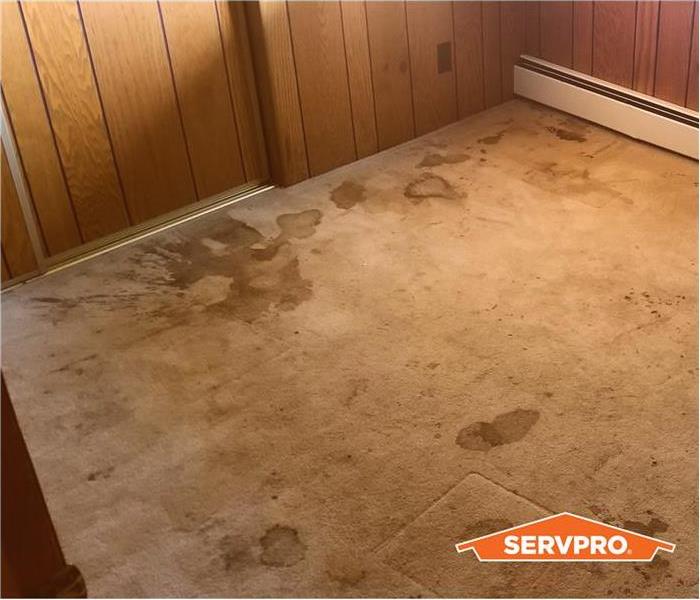 a professional will know to rip out the carpet and replace it after water extraction
a professional will know to rip out the carpet and replace it after water extraction
Professional Water Extraction and Cleaning
If a pipe breaks, a tub overflows, or dishwasher leaks water can spread quickly throughout your home. Moisture from one of these instances can soak into the carpet, damaging the porous fibers.
What does water do to a carpet?
If the water saturates the carpet, padding will disintegrate and glues will weaken, causing the backing to peel away from the fibers. The moisture also causes microbes to develop on the surface of the subfloor. Water will ruin the whole carpet if left too long, so how long is too long? How would a person know if a carpet is salvageable or not?
The answer depends on a few factors. A professional restoration company will examine the cause of water damage and determine if the water is Category 1, 2, or 3. These categories describe the levels of toxicity of the water. Flood water and sewage water are seen as unsafe and are categorized differently than tap water overflowing from a sink or bathtub.
A professional will also lift the different layers for cleaning and drying. The carpet padding will likely be thrown out, no matter how long it’s been sitting, because it is relatively inexpensive to replace. This saves a lot of time, effort, and money cleaning a potential breeding ground for microbial growth.
In general, many carpets can be restored by technicians without needing replacement—even when water seeps deep into the fibers. If the water type and severity of damage poses a risk, though, a professional will know to rip out the carpet and replace it.
Water Extraction
After technicians inspect the danger and its source, lift layers, and remove pieces, they will extract water from the carpet fibers using specialized equipment. This equipment pulls the water up through a vacuum and sends it to a tank. Heavy-duty weighted extraction tools will be used for highly saturated carpets. Weighted extraction tools use the operator's weight to compress the carpet, allowing more moisture to be extracted.
Drying
After water extraction, a professional will set up drying equipment. Air movers—SERVPRO’s name for industrial, high-powered, blower fans—push air in a circular motion speeding up the evaporation process. Dehumidifiers are simultaneously set up to pull moisture out of the environment and lower the property’s relative humidity.
Finally, a professional will disinfect the carpet. For additional information, call our office today at (727) 521-2562!
Protect Your Home Against Wind Damage
4/4/2022 (Permalink)
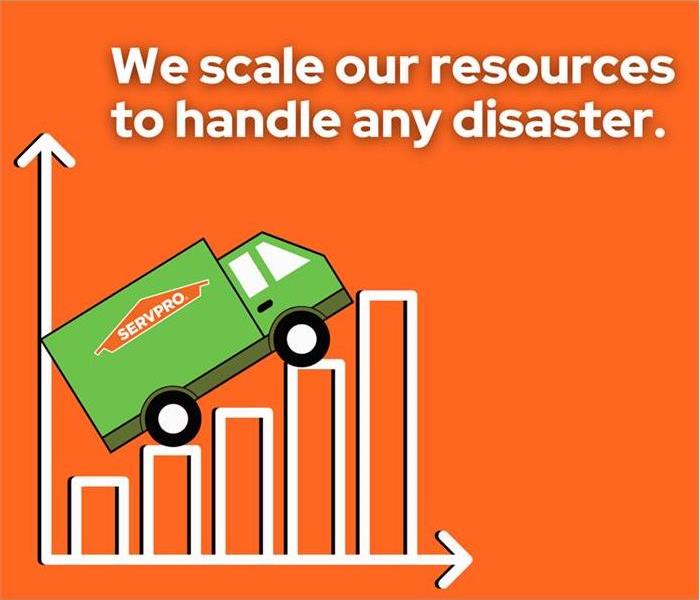 When storms hit anywhere in the United States, our SERVPRO team can scale our resources to handle even the largest storm or flooding disaster.
When storms hit anywhere in the United States, our SERVPRO team can scale our resources to handle even the largest storm or flooding disaster.
Wind Damage from Different Types of Storms
While thunderstorms are the most common source of wind and storm damage, winds from hurricanes or tornadoes are more severe and may be more costly. Still, thunderstorms are responsible for a lot of damage, such as lightning, hail, tornadoes, straight-line winds, and flooding. Either way, billions of dollars are spent on wind damage repair and storm damage restoration each year. While understanding the nature of wind damage can’t stop them from happening, it can help you limit the amount of damage to your property and save on restoration and repair costs.
What You Need to Know
Flying Debris is a Damage Risk
Flying debris can cause more damage than strong winds themselves. Damage can result from plants or other unsecured structures and objects. If a storm is approaching your area, make sure any potential debris in your homes such as patio furniture, toys, garbage cans are either secured or brought inside. Bonus tip: For severe weather, secure your doors and windows, too.
A Well-Designed Roofing System Does Wonders
Apply roof deck, shingles, or membrane over the decking. A well-designed roofing system will anchor the trusses and decking to the walls and foundation to keep the entire roof from lifting off the structure in a strong wind. Roofing material should latch to the deck.
The construction phase of building a structure is the most influential piece in reducing damage caused by storms. Loosely connected shingles will lift from the deck, so fasten that siding down. Building codes will likely direct the minimum standards for connections. You, your architect, or your contractor may decide to exceed these minimums for a stronger storm-resistant structure.
Monitor and Maintain Your Trees.
Falling trees and tree limbs are another significant type of damage to structures in a windstorm. Maintain your trees by removing dead limbs. In addition, remove the entire tree if it is dead. Healthy trees should have strong enough roots to withstand fairly strong winds, but dead trees will not.
Mitigating Damage After a Storm
What happens after the storm?
First, close any openings as soon as possible. Roof openings and broken windows are the most common source of water damage in these situations. Keep a roll of plastic sheeting that cuts to size and nail it over the opening. Your insurance policy will likely cover the cost of an emergency close-up, if needed, so contact your agent or claims center to report the damage and seek advice on how to proceed.
If the damage is too much to handle on your own, contact a restoration professional as soon as you can to help limit and repair damage and respond immediately to storm and flooding conditions.
Faster Response
SERVPRO of Gulf Beaches South / West St. Petersburg specializes in storm and flood damage restoration. Since we are locally owned and operated, we can respond quickly to your area with the right resources. This is extremely important because a fast response lessens the damage, limits further damage, and reduces the restoration cost. Our crews are highly trained and we use specialized equipment to restore your property to its pre-storm condition.
Resources to Scale Up for Large Disasters
When storms hit anywhere in the United States, our SERVPRO team can scale our resources to handle even the largest storm or flooding disaster. We can access equipment and personnel from a network of over 1900 franchises across the country as well as our elite Disaster Recovery Teams that are strategically located throughout the United States.
Prevent Water Damage While on Vacation
1/24/2022 (Permalink)
7 Steps to Preventing Water Damage While Away
According to a study done by the Insurance Institute, homeowners' highest insurance claims are water damage. Leaky or busted pipes and appliances cause millions of dollars in damage during freezing weather and storms. Leaky pipes don't take a vacation when you do and can burst, generating hundreds of dollars of repairs. Prevent water damage while your on vacation by using this checklist:
Step 1. Check for Leaks Before Going on Vacation
Check pipes under your sinks and the water heater for any rust, cracks, or damage. You should check the seals by your windows to make sure there are no cracks. Additionally, check the exterior of your house and see the condition of your roof shingles. If any show damage, getting them replaced before leaving for vacation is a good idea.
Step 2. Inspect Your Major Appliances
You must inspect the hoses connected to essential appliances in your home, such as dishwashers, washers/dryers, and refrigerators.
Step 3. Clear Out Your Gutters
Make sure to get any debris out of your rain gutters before leaving for vacation. This way, you won't have any blockages that can cause overflows which can lead to foundation problems and water damages while you're away.
Step 4. Inspect Your Sump Pump
Make sure it is in good condition and clear any debris from clogging the pit. Run a few tests, listen to the sounds it makes, and ensure that the pump's water is going outside. Install a battery-powered backup in case there is a power outage while you're away.
Step 5. Insulate Exposed Pipes
If you plan on being away from your home during the winter, it can be a good idea to insulate any exposed pipes. This will prevent them from freezing while you are away.
Step 6. Get Someone to Check on Your Home
Call a friend or hire a professional house sitter to check on your home every week while you are gone. Instruct them to ensure that the heat is always on if your vacation is during the winter. Also, show them where the water main is in case of an emergency.
Step 7. Ease Your Mind By Turning Off the Water
Lastly, if you cannot find someone to check on your home, you should turn off the water main. Drain the pipes so that they do not freeze or burst during the colder months. To do this, run the water and flush your toilet after you turn off the water. Open the cabinets under your sink to let the warm air surround the pipes.
If you experience water damage while you are away from your home, contact SERVPRO of Gulf Beaches / Southwest St. Petersburg as soon as possible at (727) 341-1001.
What Happens When I Have Water Damage?
7/8/2021 (Permalink)
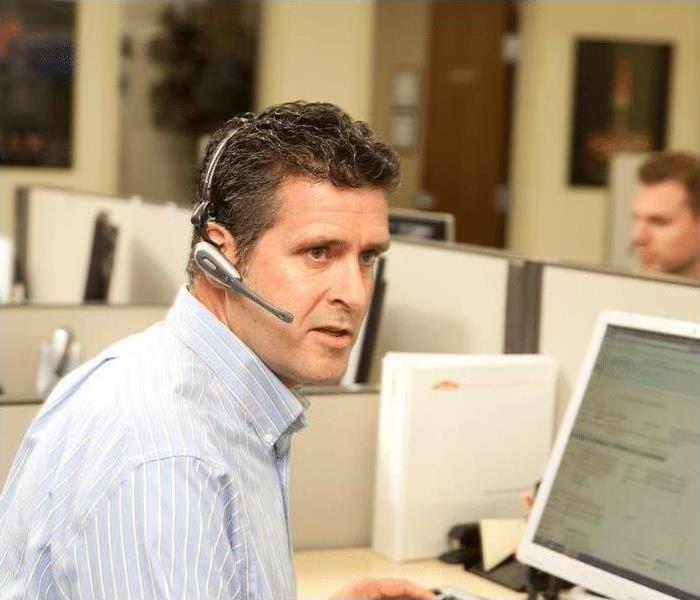 SERVPRO of Gulf Beaches South / West St. Petersburg can make your disaster "Like it never even happened."
SERVPRO of Gulf Beaches South / West St. Petersburg can make your disaster "Like it never even happened."
Nobody likes the unexpected – it can be scary and overwhelming and, worst case, time, and cost-consuming. That's why here at SERVPRO of Gulf Beaches South / West St. Petersburg we try and ease the blow of the unexpected. A team of highly trained individuals with specialized equipment, tools, and skills is needed to ensure that your water damage is taken care of swiftly and adequately.
What Can I Expect When I Give You a Call?
First, one of our employees in the office will take your call. We'll take your name, number, and address down and then ask detailed questions. This ensures we know the scope of your situation. As soon as we hang up the phone with you, we'll dispatch a team out to your home or business so they can be on-site as quickly as possible. Additionally, we'll provide an admin within the office to take care of your job. They'll give you updates and work with your insurance provider.
Once at your property, we'll extract any standing water that needs extraction using either a handheld extractor or an extractor that we can ride on. We'll then place fans and dehumidifiers to help with the drying process.
In the next few days, we'll continue to monitor the drying process. If necessary, we'll drill holes and pull baseboards. Do you have unexpected water damage? Call SERVPRO of Gulf Beaches South / West St. Petersburg today at (727) 341-1001.
Tips On Professional Water Damage Restoration
7/8/2021 (Permalink)
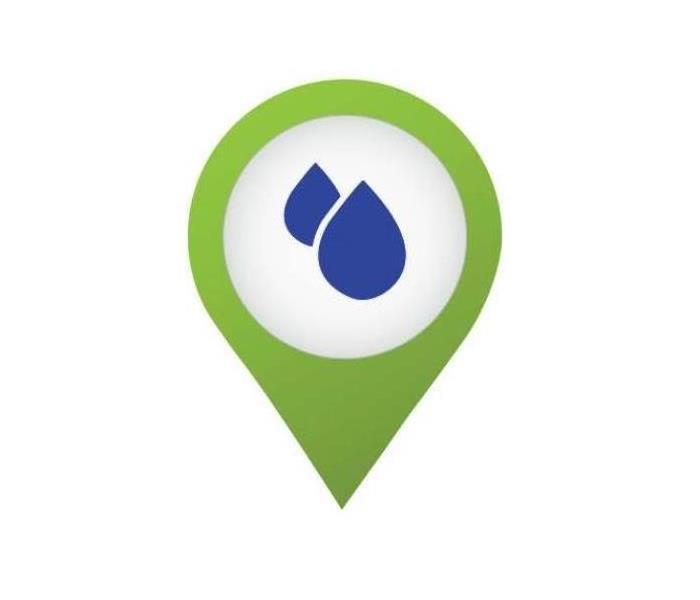 Call SERVPRO of Gulf Beaches South / West St. Petersburg today!
Call SERVPRO of Gulf Beaches South / West St. Petersburg today!
Plumbing defaults, floods, and sewerage systems defaults can cause much water damage to any commercial building or residential premises. Water damage affects the structure of a house and the contents of that building. Whether the damage is from a pipe break, supply line break, or flooding, you should work with water restoration professionals who help restore the building to its normal condition. In flood damage mitigation, several things need taking into account because the process can be complex.
Water Damage Mitigation Approach
The primary consideration is assessing the entire pipe break or supply line break systems and understanding the work requirements. Therefore, the water cleanup experts must conduct a comprehensive inspection process regarding the water in the home or water on business premises. This helps the restoration company understand the cost caused by the flood damages, the time frame of the mitigation process, and the materials and machines required in the process.
During the inspection, the professionals evaluate the cause of the pipe break or supply line break and try to stop excess water from entering the building. Some components inspected by a restoration company include the pipes supplying water on business premises, the water source, and supply lines. If the flood damages contain some sewerage components in the supply line break, the professionals will follow the necessary precautions.
Once the company inspects the entire project, they'll proceed to the water cleanup process to evacuate water in business or residential areas. Water is extracted from the inside and outside the premises, including moisture removal. With good technology and efficient water extraction machines, thousands of water in a home can quickly remove the affected premises.
After water extraction, the restoration company uses dehumidifiers and air movers to ensure that space is dried. During the drying process, windows are opened to allow air circulation. The restoration companies must monitor the affected areas and make adjustments to their water cleanup equipment if necessary. The primary objective is to provide the most effective services, save the client money, time, and restore the building to its normal conditions within the agreed period.
This is the final step in any water damage removal process. The process entails re-tilling the house, painting, reconstruction of the walls and the floor, or even renovating the roof. Every remodeling process in each premise is different. This mostly depends on the extensiveness of the damage and the desires of the homeowner.
The remodeling process reflects the design a homeowner shall have after the entire damage renovation process. The homeowner should define and declare the designs they want, restoring to their flooded homes before the actual work is done. This helps in ensuring that the remodeling fits the desires and anticipations of the homeowner. It also helps the expert know the materials in restoring the flooded home, pipe breaks, and necessary supply line break.
Things to Consider
In case you experience floods in your home or business premises, it's essential to start the water cleanup process as early as possible. Removing some things from the flooded home, such as the furniture, fittings, electrical fixtures, and other belongings, is necessary even before you call the experts. These are things that can absorb water and cause more flood damages and thus more losses. Ask a reputable water removal companies to do such work for you to avoid more casualties during the mitigation of the flooded home. Call SERVPRO of Gulf Beaches South / West St. Petersburg at (727) 341-1001.
Drying Out Water Damage
7/8/2021 (Permalink)
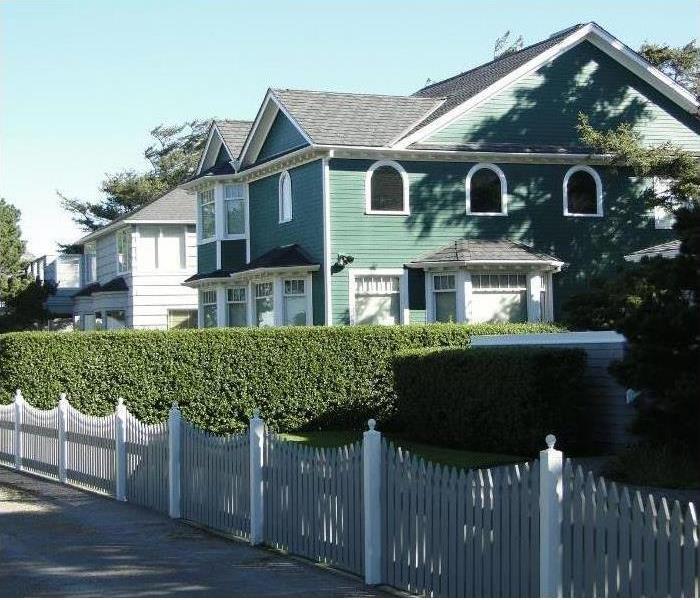 Call (727) 341-1001 to schedule a visit.
Call (727) 341-1001 to schedule a visit.
SERVPRO Drying Out Water Damaged Gulf Beaches South / West St. Petersburg Homes
After a plumbing disaster, Florida homeowners need a water vac to pull water off the floor, open the doors and windows, and rent a rug shampooer from the local big box store. To restore a home takes a professional restoration service. Drying a house with water damage in Gulf Beaches requires attention to four key factors that affect humidity.
SERVPRO restoration specialists train to analyze each one, knowing which drying methods and equipment they need to use in each home. It all comes down to HEAT. Humidity levels determine the level of water vapor in the air in a home compared to its capacity. A level of 60 percent or higher indicates the air is saturated. That greatly slows evaporation and increases drying time. Specialists use dehumidifiers to reduce the humidity level in each affected room. Working dehumidifiers can lower the level up to 20 percent every 24 hours.
Evaporation is the natural process of water converting to vapor. With large amounts of water, it is slow. Our SERVPRO specialists use pumps and smaller extraction devices to remove the bulk of the standing water. They get the amount below two inches in depth; the rate of evaporation increases. An augment rate of evaporation with dehumidifiers is to exhaust fans to increase movement, forcing saturated air outside the home.
Air movement increases using dry air to spread across damp surfaces like walls, tables, and countertops to increase the evaporation rate. Air movers and fans' combination to increase air movement is useful to dry clothing in a gentle manner that doesn't damage the fabric. Temperature is an essential factor. Since the preferred range to dry home and property is 70 to 90 degrees, we try to engage the HVAC system if it is operational. If not, specialists use space heaters to raise the internal temperature. They monitor the temperature to keep it under 80 degrees on the first day; however, a higher temperature can increase the humidity.
At SERVPRO of Gulf Beaches South / West St. Petersburg, we use every tool and method available to return every residence to a dry, safe condition. If you have had recent water damage in your home, call (727) 341-1001 to schedule a visit. We are here for you.
Preventing Water Damage on Vacation
4/22/2021 (Permalink)
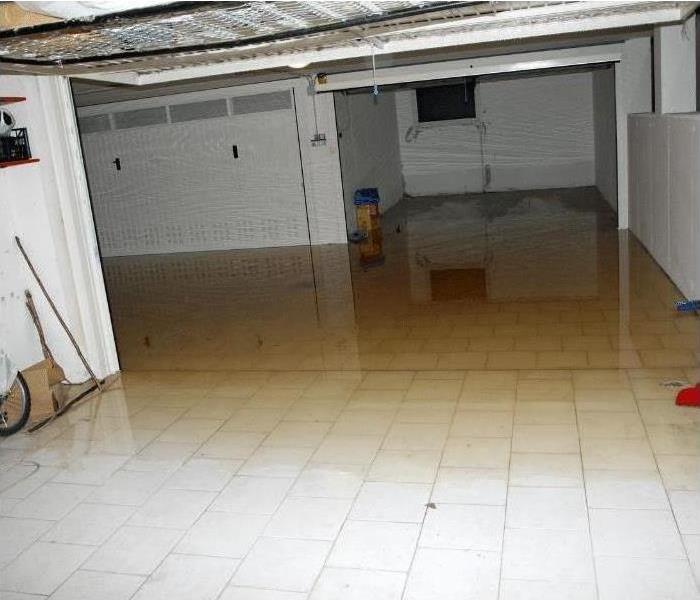 Do you have flooding in your basement? Call SERVPRO of Gulf Beaches South / West St. Petersburg!
Do you have flooding in your basement? Call SERVPRO of Gulf Beaches South / West St. Petersburg!
According to a study done by the Insurance Institute, homeowners' highest insurance claims are water damage. Leaky pipes and, in often cases, appliances cause millions of dollars of damage in freezing weather and storms. While you're on vacation, it's no surprise that a leaky pipe can burst and generate hundreds of dollars of repairs.
Step 1. Check for Leaks Before Going on Vacation
Check pipes under your sinks and the water heater for any rust, cracks, or damage. You should check the seals by your windows to make sure no cracks that might cause water damage. Additionally, check the exterior of your house and see what condition your roof shingles are in. If any show damage, getting them replaced before leaving for vacation is a good idea.
Step 2. Inspect Your Major Appliances
You must inspect the hoses connected to essential appliances in your home, such as dishwashers, washers/dryers, and refrigerators. If there's any damage, you should get the hose replaced before you leave to prevent extensive water damage.
Step 3. Clear Out Your Gutters
Make sure to get any debris out of your rain gutters before leaving for vacation. This way, you won't have any blockages that can cause damage while you're away.
Step 4. Inspect Your Sump Pump
Make sure it is in good condition and clear any debris from clogging the pit. Run a few tests, listen to the sounds it makes, and make sure that the pump's water is going outside. Install a battery-powered backup in case there's a power outage while you're away.
Step 5. Insulate Exposed Pipes
If you plan on being away from your home during the winter, it can be a good idea to insulate any exposed pipes. This will prevent them from freezing while you are away.
Step 6. Get Someone to Check on Your Home
Call a friend or hire a professional house sitter to check on your home every week while you are gone. Instruct them to ensure that the heat is always on if your vacation is during the winter. Also, show them where the water main is in case of an emergency.
Step 7. Turn Off the Water
Lastly, if you cannot find someone to check on your home, you should turn off the water main. Drain the pipes so that they do not freeze or burst during the colder months. To do this, run the water and flush your toilet after you turn off the water. Open the cabinets under your sink to let the warm air surround the pipes.
If you experience water damage while you are away from your home, contact SERVPRO of Gulf Beaches South / West St. Petersburg today at (727) 341-1001.
Understanding the 3 Types of Water Damage
2/3/2021 (Permalink)
There're several occurrences of water damage. It can come fast or occur slowly; it can be a quick fix or a significant property issue. It can be an expensive fix or time-consuming to solve. When this happens, SERVPRO Gulf Beaches South / West St. Petersburg wants to be there for you!
Being educated on water damage types can help give you peace of mind and help you prepare. There're three general categories of water damage.
Clean Water
This water is clean and comes from an uncontaminated source. If this occurs, know that it is not dangerous if consumed by pets or people. This type of water damage may occur if an incoming water line bursts, you have a bathroom flood due to an overflowing sink or tub, or have a small leak from an internal water pipe. SERVPRO can help extract the water and dry surfaces out for you. It's essential to have this done by an expert, as any remaining wet areas can bring on further issues such as mold, fungus, or rotting materials.
Grey Water
Grey Water comes from a source with some contaminants in it. If a leak, puddle, or sitting of "Clean Water" is left for too long, this can turn into Grey Water. Other sources include sump pump failures, overflowing washing machines, and even some sewage pipes. This water type may cause people and animals to become sick if their exposure is high or consumed. SERVPRO recommends calling them to handle the water professionally.
Black Water
Black Water is the most hazardous type of water damage that can occur. This water is too contaminated and likely comes from a natural disaster or sewage plumbing. This water may sometimes look clean but can contain microbes that can be toxic and harmful. When it comes to home flooding emergencies, Black Water floods can be the most destructive. This is due to the water's unsanitary conditions, causing bacteria, chemicals, and toxins to absorb into the porous items in your home. Carpets, upholstery, and drywall are often destroyed in this unsalvageable disaster.
Clean and Grey Water has the potential to even turn to Black Water if left standing or unattended. Please call SERVPRO to help remove water and disinfect your home immediately if this affects your home, and avoid exposing you and your household as it can cause illness. Our team of professionals can help in any circumstances needed!
 Don’t leave your home in the hands of just anyone—choose a trusted, certified restoration service like SERVPRO of Gulf Beaches South!
Don’t leave your home in the hands of just anyone—choose a trusted, certified restoration service like SERVPRO of Gulf Beaches South!





 24/7 Emergency Service
24/7 Emergency Service






